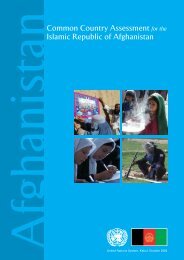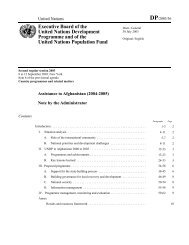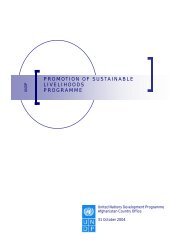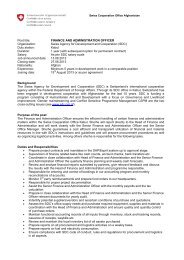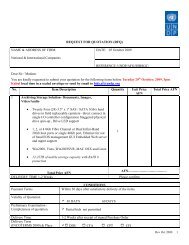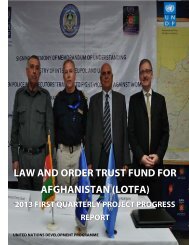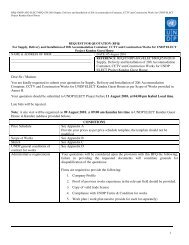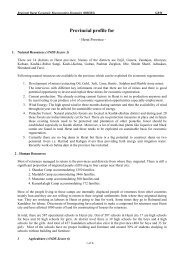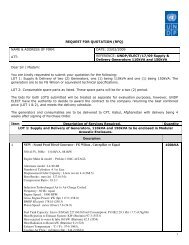Development Cooperation Report 2012 - UNDP Afghanistan
Development Cooperation Report 2012 - UNDP Afghanistan
Development Cooperation Report 2012 - UNDP Afghanistan
Create successful ePaper yourself
Turn your PDF publications into a flip-book with our unique Google optimized e-Paper software.
34<br />
BUILDING ON THE SUCCESS OF THE KABUL PROCESS<br />
During the <strong>2012</strong> DCDs, the dialogue focused not only on Kabul commitments (50%<br />
on-budget and 80% alignment), but on other initiatives of the Afghan government to<br />
achieve greater effectiveness of aid. Notably the possibility of concluding long term<br />
development framework agreements, division of labor among donors at sector level,<br />
and support for the implementation of the Busan outcome document and the New<br />
Deal was discussed. These policy initiatives are part of the revised government Aid<br />
Management Policy that the Afghan government intends to finalize and commence<br />
implementation by December <strong>2012</strong>.<br />
The discussions demonstrated a general agreement and willingness to implement<br />
these priority policy initiatives in the context of the government aid policy. This<br />
section of the report, intends to provide a brief introduction of these policy measures,<br />
demonstrate their applicability in the Afghan context and to highlight the benefits<br />
in terms of improving the predictability of aid, reducing fragmentation and brining<br />
greater order to the existing aid architecture in <strong>Afghanistan</strong>.<br />
IMPROVING THE PREDICTABILITY OF AID: DEVELOPMENT<br />
FRAMEWORK AGREEMENTS<br />
DEVELOPMENT COOPERATION REPORT<br />
Aid is predictable when donors provide<br />
reliable commitments over a multiyear<br />
framework and disburse aid in accordance<br />
with agreed disbursement plans and<br />
schedules. Likewise, when aid is predictable,<br />
the government is well positioned to prepare<br />
realistic budgets and set prioritized plans for<br />
development. In 2011, 90% of development<br />
aid budgeted by the Afghan government was<br />
actually disbursed by donors, which shows<br />
significant improvement from previous<br />
years. See [Figure 19]<br />
<strong>Development</strong> Framework Agreements (DFA)<br />
are considered to be effective tools for<br />
improving the predictability of aid. DFAs<br />
$ Millions<br />
Figure 19: Comittment vs.<br />
Disbursement (2011)<br />
3,000<br />
2,500<br />
2,000<br />
1,500<br />
1,000<br />
500<br />
0<br />
2,588<br />
2,334<br />
Total Donor Total Donor<br />
Funding Funding<br />
Committed via Disbursed via<br />
National Budget National Budget



